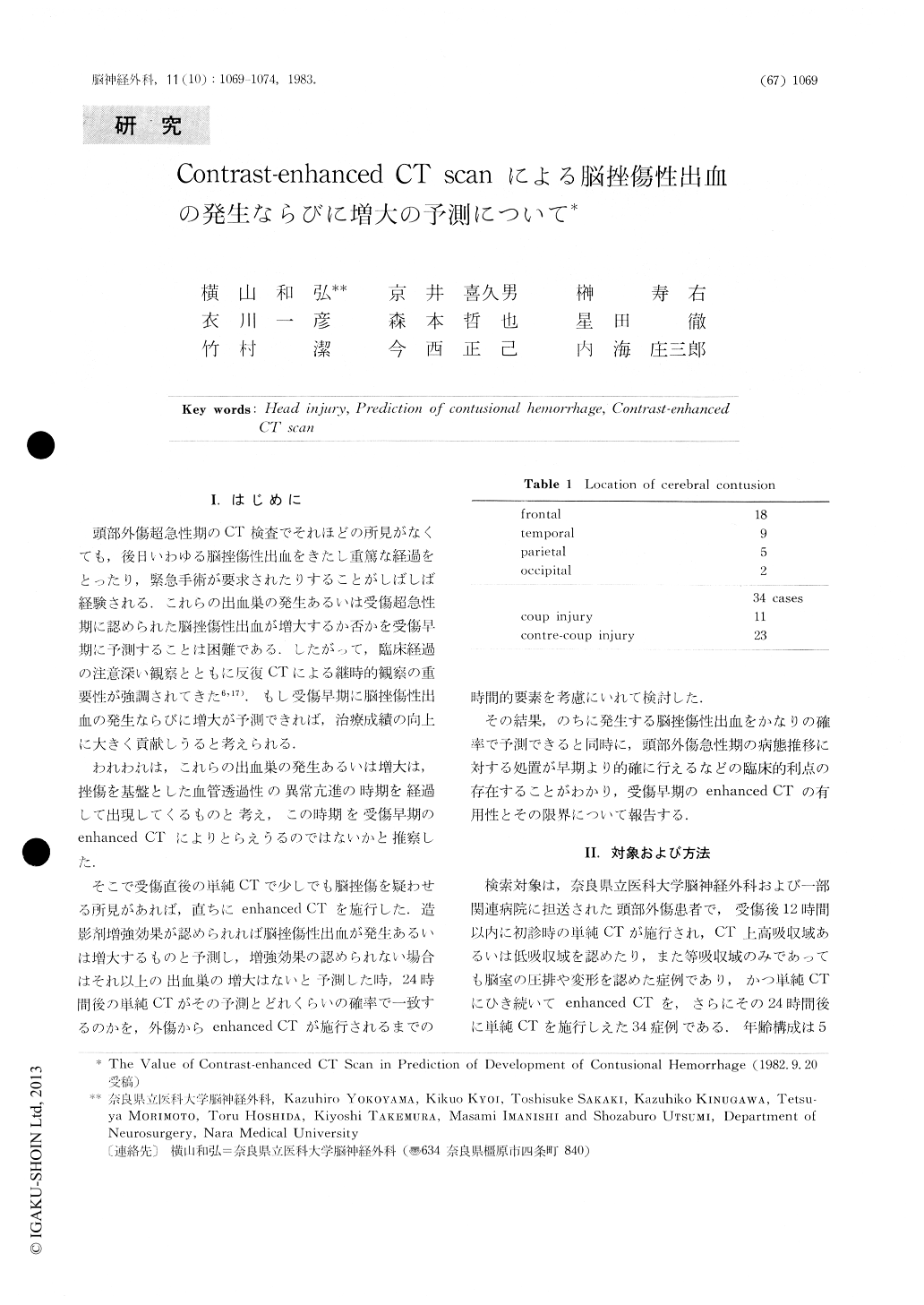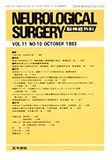Japanese
English
- 有料閲覧
- Abstract 文献概要
- 1ページ目 Look Inside
I.はじめに
頭部外傷超急性期のCT検査でそれほどの所見がなくても,後日いわゆる脳挫傷性出血をきたし重篤な経過をとったり,緊急手術が要求されたりすることがしばしば経験される.これらの出血巣の発生あるいは受傷超急性期に認められた脳挫傷性出血が増大するか否かを受傷早期に予測することは困難である.したがって,臨床経過の注意深い観察とともに反復CTによる継時的観察の重要性が強調されてきた6,17).もし受傷早期に脳挫傷性出血の発生ならびに増大が予測できれば,治療成績の向上に大きく貢献しうると考えられる.
われわれは,これらの出血巣の発生あるいは増大は,挫傷を基盤とした血管透過性の異常亢進の時期を経過して出現してくるものと考え,この時期を受傷早期のenhanced CTによりとらえうるのではないかと推察した.
It is often experienced that even if there are nosignificant findings on the initial plain CT scan in thepatient with cerebral contusion, the patient has there-after a serious clinical course and requires emergencyoperation for so-called contusional hemorrhage.
In order to predict of the development of con-tusional hemorrhage we performed contrast-enhancedCT scan at the time of patient's arrival within 12hours after injury, if there was cerebral contusion onthe initial plain CT scan, and repeated plain CT scan24 hours after the contrast-enhanced CT scan.

Copyright © 1983, Igaku-Shoin Ltd. All rights reserved.


